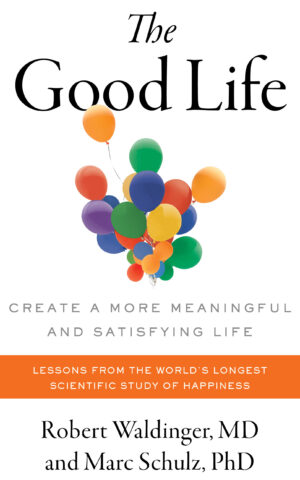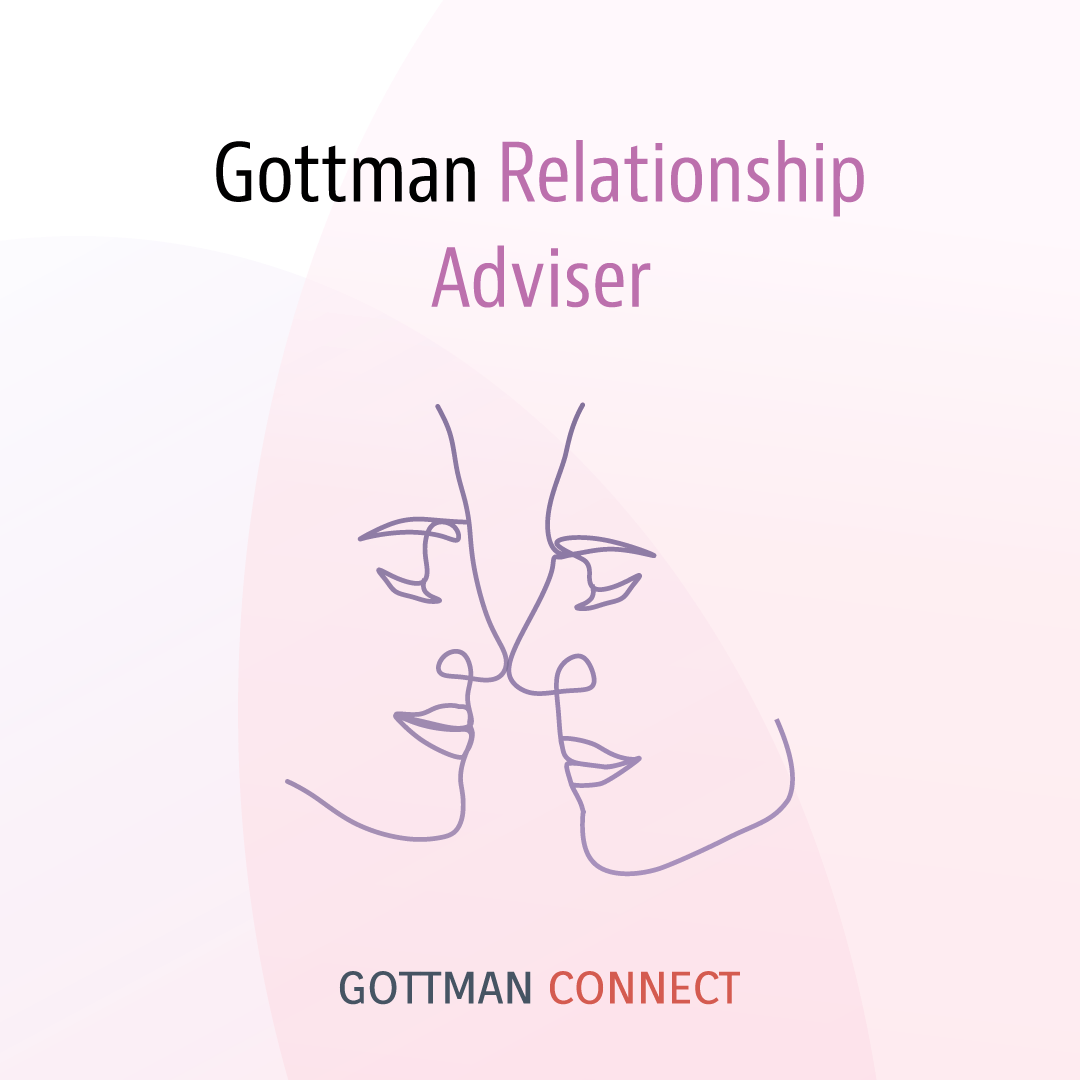Excerpted from The Good Life by Robert Waldinger, MD and Marc Schulz, PhD, published by Simon and Schuster. Copyright © 2023 by Robert Waldinger and Marc Schulz. Reprinted courtesy of Simon & Schuster, Inc.

Harvard Study Questionnaire, 1979
In Plato’s Symposium, Aristophanes gives a speech about the origin of human beings. In the beginning, he says, every human had four legs, four arms, and two heads. They were strong and ambitious creatures. Zeus, in order to diminish their fearsome powers, split them all down the middle. Now, walking on only two legs, every human is in search of their other half. “ ‘Love,’ ” Plato says, “is the name for our pursuit of wholeness, for our desire to be complete.”
After thousands of years, this idea still resonates.
“Jean is my better half,” Dill Carson, one of the inner-city Boston participants, told the Harvard Study when asked about his wife. “Every evening we sit down and have a glass of wine. It’s a kind of ritual, I don’t feel the day is complete without it. We talk about the things we’re feeling and what’s going on. If we had an argument, we’ll talk about that. We talk about plans, about the kids. It kind of rounds out the day, smooths over the rough edges. If I had to do it all over again, I’d marry the same woman, without a doubt.”
My better half . . . It’s a sentiment that a number of Harvard Study participants expressed when asked about their partners. The deepest and most positive intimate connections often gave participants a feeling, as Plato was suggesting, of balance and unity.
Unfortunately, there is no universal formula for happy partnerships, happy romances, happy marriages, no single magical key that can unlock the joys of intimate companionship for everyone. The way two “halves” might fit together varies from culture to culture, and of course from one particular relationship to the next. Even from one era to another, or one generation to another, the forms of relationships change. Most of the original participants in the Harvard Study, for example, were married at some point in their life, partly because this was the most acceptable expression of commitment at the time. Today, the variety of committed relationships is increasing, and formal marriage is becoming less common. In the United States in 2020, 51 percent of all households did not consist of any married couples. In 1950, the number was closer to 20 percent. But a change in form doesn’t necessarily mean a change in feeling; human beings remain much the same. Even within the range of seemingly “traditional” marriages there can be a lot of variation. Love comes in all shapes and sizes.
Take James Brewer, one of the Study’s college participants. He came from a small town in Indiana, and when he first arrived at Harvard he was an intelligent but still naive young man with little life experience. He told the Study he could not understand the idea of “heterosexuality.” To him it made no sense that anyone should be restricted to having sex with only one gender—as far as he was concerned, beauty was beauty, and love was love. He was attracted to both men and women; shouldn’t everybody feel that way? He was open about this idea with his friends and fellow students until he began to encounter resistance, and then significant prejudice, at which point he began to hide his sexuality. Soon after college, he married Maryanne, whom he deeply loved and who loved him, and they had kids and lived a full life together. But in 1978, after thirty-one years of marriage, Maryanne died of breast cancer, at the age of 57.
When the Study asked James why he thought their marriage had lasted so long, he wrote,
“We survived because we shared so very much. She read important parts of good books to me. We talked of castles and kings, of cabbages, and many other things. We looked and compared notes on what we saw. . . . We enjoyed eating together, seeing places together, sleeping together. . . . Our parties, our best parties, were spontaneous ones that we created for just the two of us, often as surprises for each other.”
Three years after Maryanne’s death, a Harvard Study interviewer visited James in his home. During the visit James asked the interviewer to follow him as he went into a brightly lit room chattering with birds. Beside the windows were a few cages, and in the middle of the room, several rope lattices and artificial trees. The birds alighted on him as he opened their cages and fed them. They were his wife’s birds, he told the interviewer, still so grief-stricken that he couldn’t manage to say her name. Asked about his current love life, he said that he’d had some short-lived relationships, that many people thought of him as gay, and while he wasn’t currently in a relationship, he hadn’t given up on the possibility. “I suppose eventually someone will come along and touch my heart,” he said.
As anyone who has loved another person knows, the pursuit of intimate connection is not without hazards: by opening ourselves to the joy of loving and being loved, we risk being hurt. The closer we feel to another person, the more vulnerable we become. Yet we continue to take that risk.
This chapter wades into the deep end of intimacy and the effect intimate connection has on well-being. We encourage you to see everything we offer in the coming pages through the lens of your own personal experiences, and to try to uncover some of the reasons behind both the successes and the challenges you’ve had in intimate relationships. As the lives of our Harvard Study participants show, recognizing and understanding your emotions, and how those emotions affect your intimate partner—the person beside you—can have both subtle and sweeping impacts on your life.
INTIMACY, AND ALLOWING OURSELVES TO BE KNOWN
We asked Study participants and their partners a set of questions about intimacy again and again over many decades. This allowed us to see each unique trajectory of feeling—affection, tension, and love—from a relationship’s beginnings to its very end. These relationships ran the gamut from brief and fiery to long and sleepy, and everything in between. Let’s look at one of those that’s in between:
Joseph Cichy and his wife, Olivia, married in 1948 and remained married until Olivia passed away in 2007 just after their fifty-ninth wedding anniversary. Their marriage is representative of a strong partnership, and the ways that two people can support each other over the duration of a life. But their partnership is representative for another reason, too: it was far from perfect.
Over the years, whenever the Study checked in with Joseph, he reported that he felt good about his life. He had a career he liked, three wonderful kids, and a “peaceful” relationship with his wife. In 2008, we asked their daughter, Lily, to reflect on her childhood and she told the Study that her parents were about as calm as a married couple could be. She couldn’t remember them having a single argument.
Joseph had given a similar account to the Study across many years. “I am as easy to get along with as anyone who ever lived,” he triumphantly told the Study in 1967 when he was 46 years old. He loved his wife, Olivia, just as she was, he said; there was nothing he would change about her. He gave his children the same respect he would give to anyone, offering guidance when they asked for it, but not trying to control them. In his work as a businessman, he did his best to listen to the perspectives of others before offering his own view of a situation. “The only form of persuasion that works is to empathize,” he said.
It was a philosophy that served Joseph well his entire life. He enjoyed listening to people and learning about their experiences. We’ve been making the case that understanding how others feel and think is beneficial to us in our relationships, and Joseph is a great example of this. But for everyone who was close to Joseph, this interest in people and ability to listen coexisted with a problem: he was afraid of opening himself to others, even the people he loved.
And this included his wife, Olivia.
“The greatest stress in our marriage isn’t conflict,” Joseph told the Study. “It’s Olivia’s frustration about my unwillingness to let her get inside me. She feels shut out.” She was honest with him about how much this concerned her, and Joseph was well aware of her concern, telling the Study on several occasions that Olivia often told him how difficult he was to truly know. “I’m self-sufficient.” he said. “My biggest weakness is not leaning on anybody. I’m just made that way.”
Joseph was tuned in enough to other people that he could see and articulate their difficulty with him, but he could never get past a core, deeply rooted fear that is not uncommon: he didn’t want to be a burden, or to feel anything but fully independent. Though he attended Harvard, Joseph came from humble beginnings, and told the Study that he learned the value of self-sufficiency as a child on his family farm, where he spent days on end operating a horse-drawn plow alone. His mother and father were busy with their own work on the farm, and Joseph was expected to take care of himself. As an adult he believed he should handle any problems he encountered—emotional or otherwise—on his own. He didn’t see anything wrong with that.
In 2008, his daughter Lily, who was in her 50s, told a Study interviewer that she still lamented this philosophy. Her father was always there for practical support when she needed him, and she felt she could count on him at any time of the day or night (and in fact, she did count on him; he helped her through a difficult marriage and some of the most trying times of her life). But she never felt that she fully knew him.
At the age of 72, when asked about his relationship to his wife, Joseph told the Study that the marriage was stable, but that there was also a sense of disconnection between them. “There’s nothing pulling us apart,” he said, “but we’re not bound together.”
Joseph had decided as a young man that in his relationships, two things were more important than anything else: keeping the peace, and being self-sufficient. It was important to him that his life and his family’s life be stable above all else. This wasn’t necessarily wrong; his life, by most measures, was a good one. He loved his family, and they were all very loyal to each other. Joseph was conducting his life in the way that felt safe, and to the extent his approach prevented strife, it worked for him. It’s not bad to have a marriage where there’s little disagreement. But are there costs to always keeping the peace? By being so protective of his inner experience, and so selective about what he shared—by not being daring enough to open himself up—was Joseph denying both himself and Olivia the full benefits of an intimate connection?
Many of us have someone like this in our lives; we should remember it’s not necessarily a sign that they don’t care. But Olivia, at least, felt a sense of incompleteness, because the keystone of intimacy is the feeling of knowing someone and of being known. In fact, the word intimacy comes from the Latin intimare: to make known. Intimate knowledge of another person is a feature of romantic love, but it’s also more than that. It’s a quintessential piece of the human experience, and it begins long before our first kiss, long before we consider marriage, in the very earliest days of life.
INTIMATE ATTACHMENT: THE STRANGE SITUATION
From the moment we are born we begin seeking close connections, both physical and emotional, to other people. We begin life as helpless creatures, dependent on others for our very survival. Almost everything we encounter as infants is intensely novel and potentially threatening, so it’s essential that we establish a strong connection to at least one other person from the very first days of life. Being close to our mothers or fathers or grandparents or aunties is comforting and provides a refuge from danger. As we grow, we can explore the world beyond our comfort zone knowing that we have a safe place to go if things get scary. The simplicity and clarity of the young child’s situation provides a great opportunity to observe the fundamentals of human emotional connection. This period of life vividly displays some core truths about close emotional bonds that are relevant for adults as well as children.
In the 1970s, Mary Ainsworth, a psychologist, designed a laboratory procedure to help reveal how babies respond to the world around them and the people on whom they are most dependent. It’s known as the “Strange Situation,” and it has proved so useful over the decades that it’s still employed in research today, more than fifty years later. The key elements of it work like this:
A baby, usually between 9 and 18 months old, accompanied by her primary caregiver, is introduced to a room with some toys in it. After spending a short time in the room interacting with the caregiver and playing with the toys, a stranger enters. At first the stranger minds her own business, lets the child get used to her presence, and then tries to connect with the baby. A short time later, the caregiver leaves the room.
Now the baby finds herself in a strange place, with a strange person, and no one with whom she feels close. Often the baby will immediately show signs of discomfort and begin to cry.
A short time later, the caregiver returns.
What happens next is a key reason for the experiment. The child has encountered a strange situation, experienced some stress, and now her caregiver has returned. The researchers have deliberately disrupted the infant’s sense of safety and connection—albeit briefly—and the child needs to reestablish these. How will she respond? The way the infant attempts to stay connected to the person on whom she depends for survival—her attachment style—is believed to reveal how the child views her caregiver and also herself.
A SECURE BASE
Each of us has a particular way of staying connected to a person we need. Attachment styles are relevant not just to understanding early childhood, but also to understanding how we manage relationships throughout our lives.
It is normal for children to get upset when a caregiver leaves, and in fact this is what the healthy, well-adjusted child does. When the caregiver returns, the child will immediately seek contact, and upon receiving it, calm down and return to a state of equilibrium. The child seeks contact during this “reunion” because she views her caregiver as a source of love and safety and also feels deserving of that love. A child who displays this sort of attachment behavior is considered securely attached.
But infants who feel less securely attached cope with that insecurity in two different ways: by expressing anxiety or avoidance. More anxious infants will seek immediate contact when the caregiver returns to them, but have trouble being soothed. Avoidant children, on the other hand, may appear on the surface to be unconcerned about the caregiver’s presence. They may show little outward distress when the caregiver leaves the room, and may not seek comfort when the caregiver returns. They sometimes even turn away from the caregiver during the reunion. Parents may take this to mean that the child doesn’t care. But appearances in such cases can be deceiving. Attachment researchers theorize that these avoidant children do care when the caregiver leaves, but they have learned not to make too many demands on their caregiver. They do this, according to the theory, because they’ve sensed that expressing their needs may not result in receiving love, and may also drive the caregiver away.
In real life, children encounter variations on the Strange Situation repeatedly—when they’re dropped off at daycare and then picked up at the end of the day, for example—and each of these encounters shapes their expectations about future relationships. They develop a sense of how likely it is that others will be helpful, and also a judgment about how deserving they are of support.
Adult life is, in some fundamental ways, a real-world, highly complex version of the Strange Situation. Like every child who has been separated from their parent, each of us longs for a sense of security, or what psychologists call a secure base of attachment. A child may feel threatened because her mother is not in the room, and an adult may feel threatened by a frightening health diagnosis; both benefit from a sense that someone is there for them.
But attachment security exists on a spectrum for adults as well, and many of us are not fully secure in our attachments. Some of us may cling to others during times of stress yet have difficulty finding the comfort we seek, while others, like Joseph Cichy, may avoid closeness because we fear, deep down, that if we become a burden to others, we will drive them away. Or we may not be convinced that we are fully lovable. And yet we still need connection. Life becomes more complex as we age, but the benefits that come from having secure connections continue through every phase of life.
Henry and Rosa Keane, whom we met in Chapter One, are a shining example of two people with secure connections. Every time they faced a difficulty together—from one of their children contracting polio, to Henry being laid off, to the task of facing their own mortality—they were able to turn to each other for support, comfort, and courage.
The sequence for both babies and adults is often similar: a stress or difficulty disturbs our sense of security, and we seek to restore that sense. If we’re lucky we are able to do this by gaining comfort from those who are close to us, and we return to equilibrium.
In our last interview with them, sitting at their kitchen table, Henry and Rosa kept physically reaching out for each other, especially when answering difficult questions about future health challenges and their own mortality. Through most of the interview, they were holding hands.
That simplest of gestures—holding a partner’s hand—is a helpful portal into the world of adult intimate attachment. In the Strange Situation, when a securely attached child seeks her caregiver and is comforted by a hug, there are physiological and psychological benefits. Her body and her emotions are calmed. The same is true for adults.
Sign up for the Love Notes Newsletter and receive a free download
Get the latest on relationships, parenting, therapy and more from the experts at The Gottman Institute. Sign up now and receive a free monthly download.










